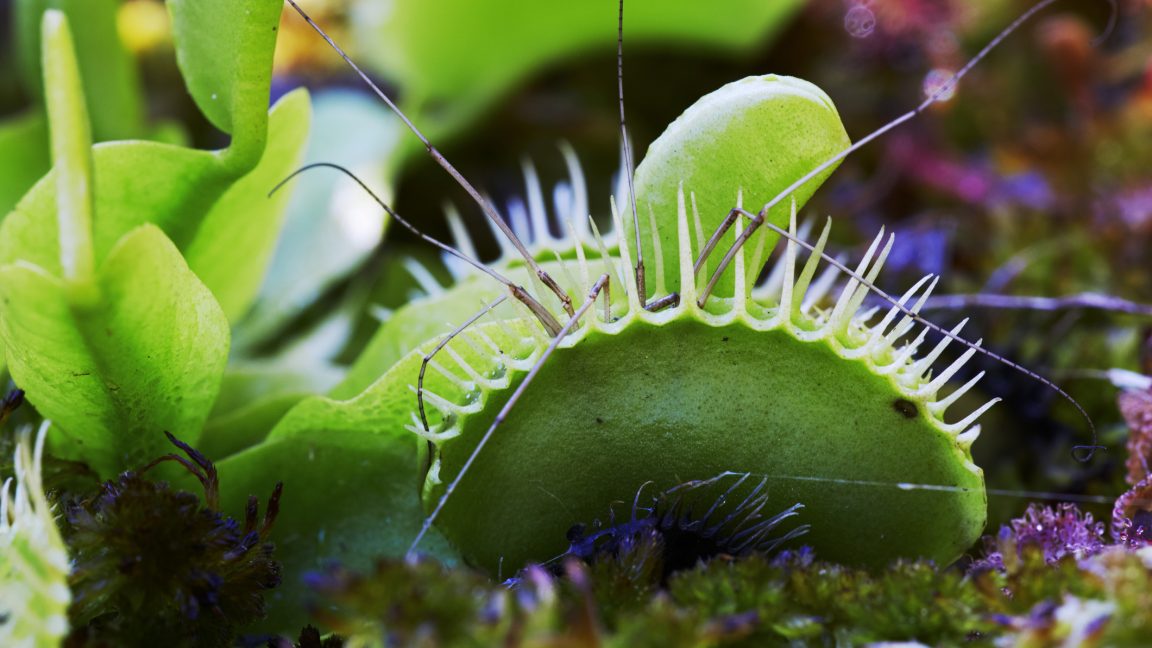
"As previously reported, the Venus flytrap attracts its prey with a pleasing fruity scent. When an insect lands on a leaf, it stimulates the highly sensitive trigger hairs that line the leaf. When the pressure becomes strong enough to bend those hairs, the plant will snap its leaves shut and trap the insect inside. Long cilia grab and hold the insect in place, much like fingers, as the plant begins to secrete digestive juices."
"In 2016, Rainer Hedrich, a biophysicist at Julius-Maximilians-Universität Würzburg in Bavaria, Germany, led the team that discovered that the Venus flytrap could actually "count" the number of times something touches its hair-lined leaves-an ability that helps the plant distinguish between the presence of prey and a small nut or stone, or even a dead insect. The plant detects the first "action potential" but doesn't snap shut right away, waiting until a second zap confirms the presence of actual prey, at which point the trap closes."
The molecular mechanism that triggers touch-induced rapid electrical impulses in the Venus flytrap has been identified. The plant attracts prey with a fruity scent and uses highly sensitive trigger hairs on its leaves to detect mechanical bending from an insect landing. When the hairs bend under sufficient pressure the trap snaps shut and long cilia hold the insect while the plant secretes digestive juices. The insect is digested over five to twelve days before the trap reopens and releases the dried husk. The plant detects an initial action potential and requires five total hair stimulations to trigger full digestive enzyme release. Electrical signals originate in the hairs and propagate radially across the leaf.
Read at Ars Technica
Unable to calculate read time
Collection
[
|
...
]